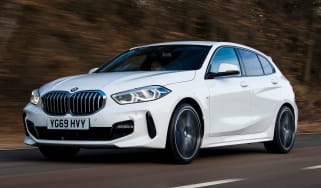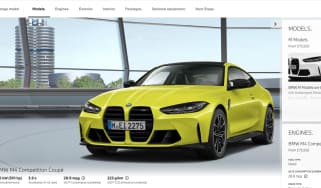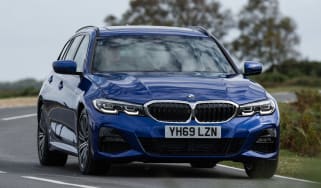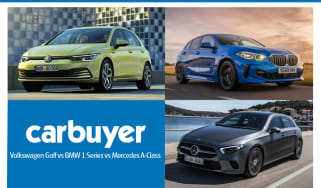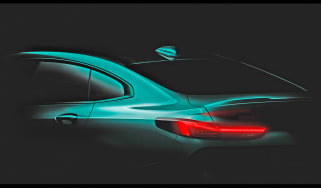BMW 1 Series review – the keen driver’s premium hatchback pick
"The BMW 1 Series offers comfort, luxury and driving enjoyment, though it’s not as practical as before"
Pros
- Great to drive
- Comfortable and refined
- Excellent interior
Cons
- Tight rear headroom
- Limited engine options
- Small boot in 120 mild-hybrid
Verdict – is the BMW 1 Series a good car?
The BMW 1 Series is still one of the best premium hatchbacks you can buy. Interior quality is top notch, while the driving experience strikes an excellent balance between sporty handling and ride comfort. It’s a shame the engine range has narrowed, but the 120 engine is a good fit, even if its mild-hybrid system reduces boot space – a drawback that surprisingly makes the hot M135 xDrive model the more practical option. For those wanting an upmarket feel and an engaging drive, the 1 Series continues to stand out as a great choice.
BMW 1 Series models, specs and alternatives
The BMW 1 Series has always done things a bit differently. The original model launched in 2004 to compete with the Audi A3 and Mercedes A-Class, but unlike those rivals, it featured a sporty rear-wheel drive setup more commonly found in sports cars and saloons. That focus on the driving experience remains a hallmark of the latest BMW 1 Series, although things have changed somewhat under the skin.
Since 2019, its unique rear-wheel drive layout is gone, replaced instead by a traditional front-wheel drive or – in the case of the sportiest model – all-wheel drive configuration like its rivals. But don’t think that BMW has abandoned its “ultimate driving machine” mantra – the focus is still very much on having fun behind the wheel.
More reviews
Car trim reviews
In-depth reviews
- BMW M135i review – a fast and practical hot hatch, but lacks character
- BMW 1 Series coupe (2008-2014)
Road tests
Used car reviews
Those mechanical changes certainly haven’t dampened sales. The BMW 1 Series regularly appears in the UK’s top 10 best-selling cars list, and a major overhaul in 2024 ushered in a raft of updates to keep it competitive. The changes are so extensive that BMW refers to this 1 Series as an entirely new model, even though it’s more of a major facelift of the car that was introduced in 2019.
Styling updates include thinner headlights, while the grille has been made shorter and wider. At the rear, the tail-lights are now broken up with a kink between the rear quarter and boot segments to add a little more interest. The interior has been given a thorough refresh, too, with a new dashboard and a pair of screens running the latest BMW iDrive software.
Greater changes come under the bonnet, with a heavily reduced range of engines. All diesel models have been removed, leaving just the standard 120 mild-hybrid petrol model and the M135 hot hatch, which boasts a 2.0-litre four-cylinder engine with 296bhp – that’s actually down on the outgoing M135i’s 301bhp. You’ll notice that both model names have lost their ‘i’ suffix – that’s to avoid confusion with BMW’s electric model naming system. All 1 Series models now come as standard with a seven-speed automatic transmission, so there’s no manual option remaining.
The BMW 1 Series comes in a few trim levels, starting with the base Sport, higher-spec M Sport and range-topping performance M model. As standard, the 1 Series now gets an updated dual-screen infotainment system, although the rotary controller on the centre console is gone, leaving just the touchscreen for navigating through menus.
What about buying a used or nearly new BMW 1 Series?
The BMW 1 Series has been a popular entry point into the premium car brand for nearly two decades. Residual values are strong and so if you are looking for a nearly new example don’t be surprised if a high specification used model is as expensive as a brand new base version. On the plus side, once you have found a used car you are happy with, it is likely to maintain its value well.
What’s its history?
The BMW 1 Series was first launched in 2004. It wasn’t the first BMW hatchback – that would be the 3 Series Compact from a decade earlier – but the 1 Series proved far more popular, giving BMW an entry-level model to go up against the Audi A3 and Mercedes A-Class.
This model was quite different from previous BMW models but retained the brand’s traditional rear-wheel-drive layout. It was a unique car in its class because rivals such as the Volkswagen Golf were all front-wheel drive.
The first-generation 1 Series was available in two-door coupe, three-door hatch, five-door hatch and convertible forms. When the Mk2 model arrived in 2011, the coupe and convertible versions were renamed as the 2 Series, leaving just the three-door and five-door hatchback models. The styling wasn’t a huge change over the previous model, but modern tech and engines kept it up to date.
The third-generation car came out in 2019 and it changed to front-wheel drive. The 1 Series had lost its unique selling point, and was now only a five-door hatch, but it remained one of the best cars in its class to drive. This model was heavily updated in 2024, although BMW refers to it as the new fourth-generation model.
Used BMW 1 Series (Mk2 2011-2019)

The second-generation BMW 1 Series is still a fantastic choice and since it’s rear-wheel drive, it feels rather different from the current model to drive. It’s a lot of fun and there are loads of engines, from the ultra-frugal 116d to the powerful and fast M140i. The Mk2 model was a sales hit and so there are loads for sale, so there’s bound to be one in-budget.
Read the full 1 Series Mk2 review...
Used BMW 1 Series (Mk1 2004-2011)

The first-generation 1 Series spans from ropey and unloved low-spec diesels for about £1,000 to the ultra-rare and sought-after 1 Series M Coupe, which now costs more than some brand-new hot hatches. Most are somewhere in between and the best are well looked-after versions that offer fun handling and decent performance at an affordable price.


















